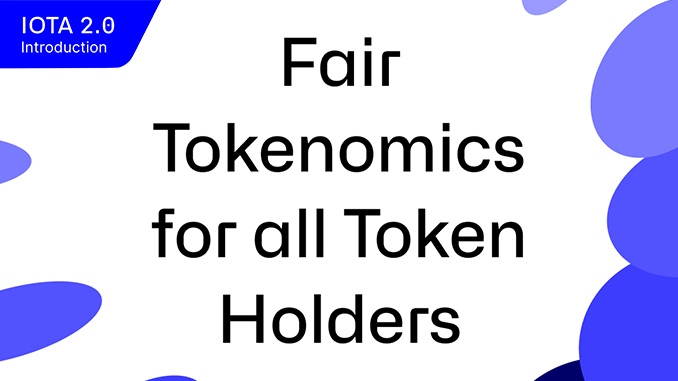
The IOTA Foundation has presented its ideas for the “fair and sustainable” distribution of tokens in an official blog post. But if you think about it carefully as an investor, you can only feel like you’ve been taken for a ride. Read for yourself.
IOTA 2.0 as a lifeline? Since the beginning of October, the IOTA Foundation has been distributing a series of official blog posts outlining how the cryptocurrency is set to recapture markets in a version 2.0. The latest prank can be read here and promises “Fair tokenomics for all investors (token holders)”, and the IOTA Foundation also uses the word “sustainability” on X. Is this really how Bitcoin and co. are actually defined?
– By October 2023, there were almost 2.8 billion IOTA tokens in existence. Then the IOTA Foundation single-handedly increased the total amount by a good 1.8 billion tokens with the Stardust upgrade. This contradicted earlier statements, including those made by the head of the foundation Dominik Schiener, who last assured in 2021: “IOTA is the only token economy without any inflation. There will never be more tokens (than now). There is only a limited number of tokens.” Investors have been hit hard by the “inflation hammer”, as the artificial increase in the total amount of all IOTA by a good 60 percent will predictably lead to constant price pressure in the coming years.
– The IOTA Foundation’s decision to distribute 230 million tokens (currently worth 41.4 million US dollars) to “contributors” is also causing anger. It remains unclear who was the beneficiary of this windfall. Neither Schiener nor the foundation respond to questions. Is this what is meant by “fair” tokenomics?
– A large proportion of the “newly printed” tokens will go to the IOTA Foundation itself, which has recently established a presence in Abu Dhabi. In addition, the Tangle Ecosystem Association based in Switzerland will receive 552 million IOTA. A shady man named Graziano Pedroja is the sole authorized signatory. In general, the IOTA Foundation has failed to provide promised transparency reports for years.
– One could argue that IOTA 2.0 will put things right. In the blog post, Mana is emphasized as the future possibility for normal users to benefit from further developments. Mana is to be used in a decentralized IOTA network to allow transactions to be carried out. The vision: IOTA can be staked, so to speak, and Mana is then issued in return. Previously, it was said that Mana would not have any monetary value and that IOTA would therefore stick to its principle of free transactions. This promise is apparently also being canceled.
– The big final question remains: when will the much-vaunted IOTA 2.0 actually become a reality? The foundation under Schiener has not published any timelines since May 2021 and the developers have been biting their teeth out for at least 7 years now on the task of decentralizing IOTA through a “Coordicide”.
Conclusion: IOTA Foundation and Schiener are spinning their wheels
The IOTA Foundation and Schiener have fooled investors in tokenomics with their “reprinted” tokens. On the markets, IOTA is still just in the list of the 100 most capitalized cryptocurrencies. A lack of transparency, often disastrous communication policies and the never-achieved goal of IOTA 2.0 have continuously destroyed trust in the foundation and Schiener. Schiener and his entourage are also facing serious allegations of “insider trading”, which he failed to clear up against his promises. In such a situation, critical investors are likely to regard the talk of “fair tokenomics” in IOTA 2.0 and the painting of castles in the air as a mockery.

Leave a Reply